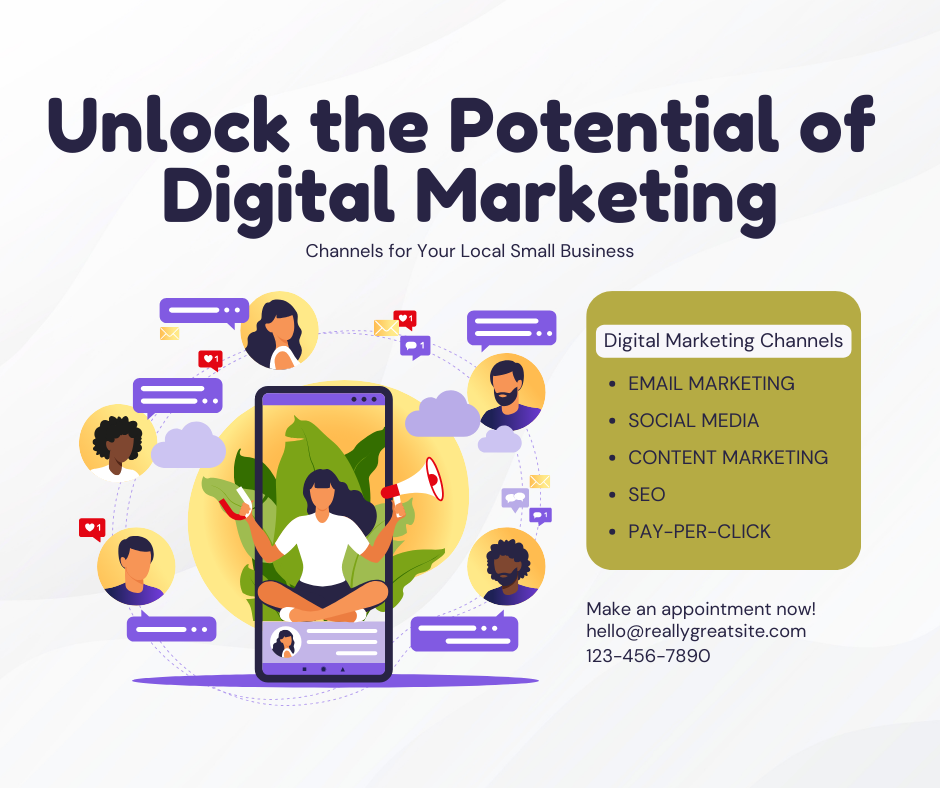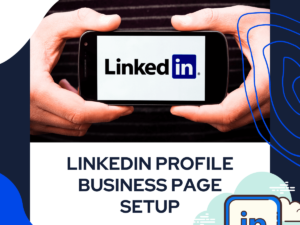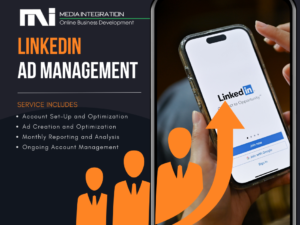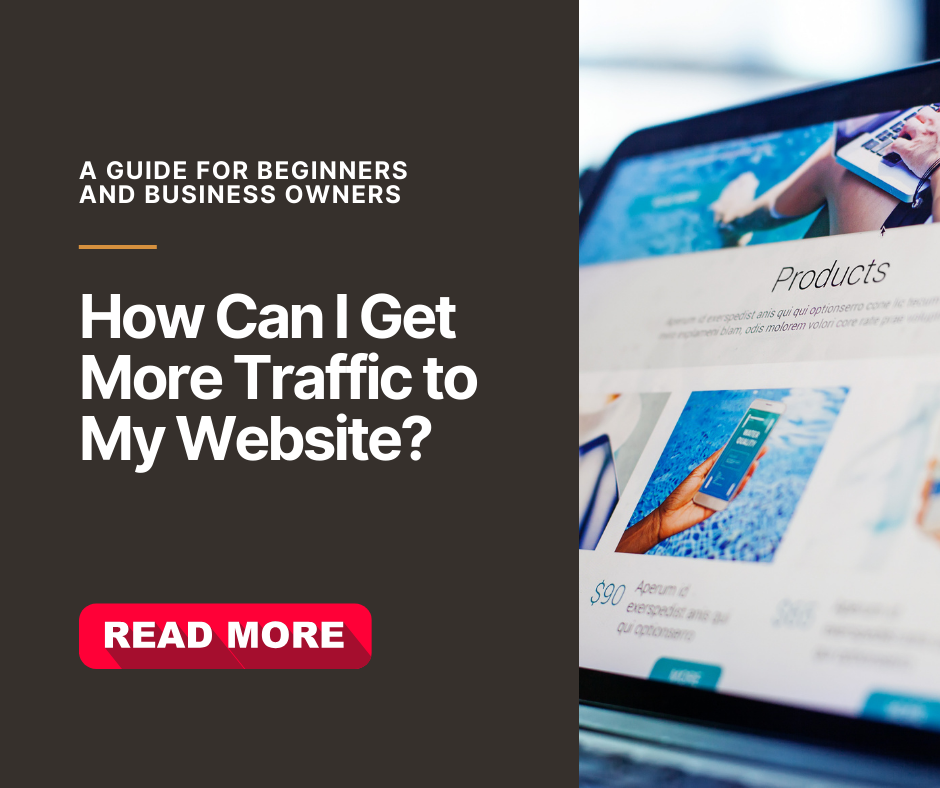Digital Marketing Channels Are Essential for Local Small Businesses
For local small businesses, utilizing digital marketing channels effectively is more crucial than ever. Unlike big corporations, small businesses have a limited budget, making it essential to make every penny count. This post aims to give you a comprehensive guide on the different types of digital marketing channels and how to make the most out of them. Real-world examples and statistics are provided to back up each point, tailored for an easy understanding for local small businesses.
Deep Dive: Email Marketing for Local Small Businesses
Email marketing is an extraordinarily effective digital marketing channel for local businesses. One of the most compelling statistics is that, according to Campaign Monitor, for every dollar you spend on email marketing, you can expect an average return of $42[1]. But to truly capitalize on this channel, you must be strategic, focusing on targeted and personalized campaigns.
Why Personalization Matters in Email Digital Marketing Channels
Personalized email campaigns go beyond simply inserting the customer’s name into the email. They involve understanding the customer’s behavior, preferences, and past interactions with your business. For example, if you run a local bakery, you can segment your email list based on customer behavior—those who purchase frequently, those who haven’t visited in a while, or those who have only bought specific types of goods like pastries or cakes.
Hypothetical Examples
- Local Bakery: Send personalized birthday emails offering a free cupcake. Not only will this likely bring someone into your store, but they may also make additional purchases or bring friends.
- Fitness Studio: After a client attends five classes, send an email offering a discount on the next membership package they buy. It rewards loyalty and encourages future attendance.
- Pet Supply Store: Send emails tailored to the type of pet the customer owns, offering specific deals on related products. For example, if someone frequently purchases cat food, send them an email when you have a sale on cat toys or health products.
Mini Action Plan for Digital Marketing Channels: A Practical Email Strategy You Can Implement Today
Before you proceed, it’s crucial to know that the following Mini Action Plan focuses on leveraging one of the most effective digital marketing channels—email marketing. This strategy is designed to help local small businesses take immediate steps for significant impact. Whether you’re a newcomer or looking to optimize your existing strategies across digital marketing channels, this email marketing plan will help you drive revenue and foster customer loyalty. Implement this actionable plan today to enhance your digital marketing channels strategy and achieve better customer engagement.
- Week 1: List Segmentation
- Begin by segmenting your existing email list into different categories: frequent buyers, occasional customers, and inactive customers.
- Week 2-3: Content Creation
- Craft personalized email messages for each segment. Frequent buyers could get loyalty rewards, occasional customers might get incentivizing discounts, and inactive ones could receive a “We Miss You” message with a special offer.
- Week 4: Testing
- Start with a small test group from each segment. Send out your personalized emails and monitor open rates, click-through rates, and conversions.
- Week 5: Analysis and Adjustment
- Review the metrics. If the emails are effective, great! If not, tweak the message or offer and test again.
- Week 6 Onwards: Full Implementation
- Once you are satisfied with the results, roll out the campaigns to the entire segment.
By adopting targeted and personalized email marketing strategies, you’re not just casting a wide net; you’re fishing with a spear, aiming for quality engagement that builds long-term relationships and boosts customer loyalty.
Disclaimer: This action plan serves as a generalized guide and may not yield the same results for all businesses. It’s important to tailor the steps according to the unique needs and circumstances of your business for optimal success.
Social Media: A Modern Word-of-Mouth in Digital Marketing Channels
Social media is increasingly becoming one of the indispensable digital marketing channels for businesses of all sizes. According to Ambassador, about 71% of consumers are more likely to recommend a brand to friends and family if they’ve had a good social media experience with it[2]. Such powerful statistics highlight the pivotal role of social media in shaping consumer behavior and creating community engagement. For instance, if you own a local bookstore, having an active Instagram account showcasing new arrivals, behind-the-scenes looks, and customer testimonials can turn online interactions into real-world foot traffic.
So, How Can Different Types of Local Businesses Leverage Social Media?
To offer a clearer perspective on how versatile and effective social media can be for diverse local businesses, let’s dive into some hypothetical examples.
Hypothetical Examples
- Local Coffee Shop: Imagine you run a local coffee shop and you’ve just launched a new seasonal drink. You could post aesthetically pleasing photos or short video clips of the making process on Instagram. In addition, you could host a live Q&A session on Facebook where you discuss coffee sourcing and preparation techniques. Offering a special discount code during the live session can encourage immediate action and boost sales.
- Community Fitness Center: As a fitness center owner, you could use social media platforms like Instagram and YouTube to post workout tips, nutritional advice, and client success stories. Host weekly challenges and invite your followers to participate by using a specific hashtag. As participants share their progress and tag your business, their followers get to see it, providing you with free, word-of-mouth advertising.
- Home Decor Store: If you own a home decor store, Pinterest could be a great platform for showcasing your products. Create different boards for various room setups or decor styles, featuring your products in each. Share these boards on other social media platforms and encourage your customers to pin your products on their own boards. Run a contest where the best home decor idea featuring your products wins a small prize, encouraging more pins and thereby broadening your brand’s reach.
Each of these hypothetical examples turns social media from a mere online presence into a powerful component among other digital marketing channels, converting online interactions into tangible business benefits.
Mini Action Plan for Digital Marketing Channels: Harness Social Media Today
The following Mini Action Plan aims to guide you through the foundational steps to make social media one of your most effective digital marketing channels. This action plan is an easily executable guide for local small businesses to create a meaningful social media presence. If you’re seeking to bolster customer recommendations and foot traffic, these practical steps are for you.
- Week 1: Platform Selection
- Identify which social media platforms your target audience frequents. Facebook is generally good for a broad demographic, while Instagram or TikTok may be better for a younger crowd.
- Week 2: Content Planning
- Plan out a content calendar for at least one month. Use a mix of product highlights, customer testimonials, and community events related to your business.
- Week 3: Initial Posting
- Start by posting at least three times a week. Keep an eye on audience engagement—likes, shares, comments—to gauge what type of content resonates the most.
- Week 4: Audience Engagement
- Make it a daily habit to respond to comments, messages, and even share user-generated content that features your business.
- Week 5-6: Review and Tweak
- By now, you’ll have a decent amount of data on what’s working and what’s not. Use this to refine your content strategy for the next month.
- Week 7 Onwards: Consistency and Scaling
- Keep posting and engaging with your audience consistently. Consider adding another social media platform to your digital marketing channels.
By following this Mini Action Plan, you’ll not only create an active social media presence but also turn this digital marketing channel into a potent tool for community engagement and business growth.
Disclaimer: This action plan serves as a generalized guide and may not yield the same results for all businesses. It’s important to tailor the steps according to the unique needs and circumstances of your business for optimal success.
Content Marketing: A Trust-Building Tool in Digital Marketing Channels
Content marketing stands out as one of the more trust-building digital marketing channels. Studies suggest that 70% of consumers prefer learning about a business through articles rather than traditional advertisements[3]. This form of marketing is about more than just selling your products; it’s about offering valuable insights that solve the problems of your potential customers. For example, if you own a local gardening store, creating blog posts about plant care, home gardening tips, and seasonal gardening activities can not only establish you as an authority in your field but also drive organic traffic to your website.
How Can Different Local Businesses Leverage Content Marketing?
To bring the utility of content marketing into sharper focus for various types of local businesses, let’s delve into some hypothetical examples.
Hypothetical Examples
- Local Bakery: Imagine you own a local bakery. You could create a blog series on “Baking Basics,” teaching people how to make simple bread, cakes, or cookies. Include high-quality photos or videos, and perhaps a downloadable recipe PDF. Over time, you could compile these articles into a free e-book, capturing email addresses in the process for your email marketing efforts.
- Auto Repair Shop: As the owner of a local auto repair shop, you could create video content around “Car Maintenance 101,” offering tips for simple car problems people can fix on their own. This content could range from how to change a tire to checking oil levels. The videos can then be complemented by blog posts, providing a written step-by-step guide.
- Pet Supply Store: If you own a pet supply store, think about running a monthly feature called “Pet of the Month,” where you profile different types of pets and provide specific care guidelines, food recommendations, and toy suggestions. Not only does this make for adorable content, but it also offers valuable information to pet owners.
These hypothetical examples serve as practical illustrations for how content marketing can play a significant role in your digital marketing channels strategy, turning potential customers into loyal brand advocates.
Mini Action Plan: Your Roadmap for Implementing Content Marketing in Your Business Strategy
Before you plunge into the world of digital marketing channels, it’s essential to have a structured plan. The following Mini Action Plan aims to guide local businesses through the process of leveraging content marketing, one of the most effective digital marketing channels. Whether you run a bakery, auto repair shop, or a pet supply store, this is your step-by-step guide to offering value, building trust, and engaging with your audience.
- Week 1: Keyword Research and Audience Insight
- Research relevant keywords that resonate with your business and audience. Use tools like Google Keyword Planner to identify phrases and terms commonly used in your industry.
- Week 2: Content Calendar Creation
- With your keywords in hand, create a content calendar for the next month. Outline what topics you’ll cover, matching each with targeted keywords.
- Week 3: Craft the Content
- Start writing your articles, blog posts, or creating videos. Ensure each piece is optimized for your chosen keywords and genuinely offers value to the reader.
- Week 4: Publish and Share
- Once your content is ready, publish it on your platform and share it across your other digital marketing channels like social media, email, etc.
- Week 5: Monitor and Analyze
- Use tools like Google Analytics to see how your content is performing. Look at metrics such as page views, time spent, and click-through rates to gauge success.
- Week 6 Onwards: Refine and Repeat
- Based on the data you’ve gathered, refine your strategy. Update old content, develop new pieces, and continue sharing across various digital marketing channels for maximum exposure.
By following this Mini Action Plan, local businesses can make the most of content marketing as a key component of their digital marketing channels. Implement this plan to build trust, offer value, and ultimately, grow your business.
Disclaimer: This action plan serves as a generalized guide and may not yield the same results for all businesses. It’s important to tailor the steps according to the unique needs and circumstances of your business for optimal success.
Search Engine Optimization (SEO): An Underrated Gem in Your Digital Marketing Channels
Search Engine Optimization (SEO) is one of those digital marketing channels that often gets overlooked, yet it’s incredibly important. An overwhelming 93% of all online experiences kick off with a search engine[4]. For local businesses, especially, SEO can be a game-changer. Consider a local café: optimizing your website and Google My Business profile ensures that when someone searches for “best coffee near me,” your café shows up in the results. Investing in both on-page and off-page SEO could yield long-term benefits that far outweigh the initial effort and cost.
Unpacking the Potential of SEO Through Hypothetical Scenarios
Let’s explore the concept further with some hypothetical examples that highlight how SEO can be effectively leveraged across different local businesses.
Hypothetical Examples
- Local Gym: Imagine you own a local gym. You could optimize your website for search terms like “local gym near me” or “best fitness classes in [Your City].” Offering a free e-guide on “10 Tips for a Healthy Lifestyle” in exchange for an email can be an additional SEO tactic to capture leads.
- Flower Shop: If you’re running a local flower shop, using SEO to optimize for terms like “best flower shop in [Your City]” or “Valentine’s Day flowers” can make a significant impact. You could also create blog posts around flower care, optimizing them with keywords that potential customers might use.
- Law Firm: For a local law firm, optimizing your website for terms like “[Your City] family lawyer” or “estate planning in [Your City]” could be beneficial. Offering free downloadable resources like “5 Things to Know Before Filing for Divorce” can help improve your site’s search ranking.
Mini Action Plan for Digital Marketing Channels: SEO Strategy to Try Today
The following Mini Action Plan is designed to help local businesses implement an effective SEO strategy as part of their broader approach to digital marketing channels. Here are some actionable steps you can try:
- Week 1: Keyword Research
- Use tools like Google Keyword Planner to identify high-performing keywords relevant to your business.
- Week 2: On-Page SEO
- Optimize your website’s meta descriptions, titles, and content with the identified keywords.
- Week 3: Off-Page SEO
- Start building backlinks by reaching out to local directories, guest posting, or leveraging social media.
- Week 4: Local SEO
- Optimize your Google My Business profile. Make sure it’s complete, accurate, and updated regularly.
- Week 5: Monitor
- Use Google Analytics to track changes in your website’s traffic and ranking. Adjust your SEO strategy accordingly.
- Week 6 Onwards: Refinement
- Continue to update and refine your SEO strategy based on performance metrics.
By employing this Mini Action Plan, SEO will soon become a potent part of your overall digital marketing channels, effectively enhancing your business’s visibility and reach.
Disclaimer: This Mini Action Plan is meant as a general guide and may not yield the same results for every business. For optimal results, tailor the strategy to your specific business requirements and seek professional advice as needed.
Pay-Per-Click (PPC) Advertising: A High-Octane Fuel for Your Digital Marketing Channels
As we steer through the diversified landscape of digital marketing channels, it’s impossible to ignore the immediate impact of Pay-Per-Click (PPC) advertising. If you’re in a hurry to see tangible results, PPC is your go-to strategy. Studies indicate that a significant 64.6% of people click on Google Ads when they search online[5]. Let’s consider a local pet store: With PPC ads, you could specifically target pet owners in your area for a weekend sale. While PPC does have a cost associated with it, the returns can be rewarding if the campaign is well-designed and effectively managed.
Illustrating the Power of PPC: Hypothetical Examples
To better understand how PPC can fuel your business growth, let’s delve into some hypothetical scenarios that highlight its versatility.
Hypothetical Examples
- Local Bakery: Suppose you run a local bakery that just launched a new line of vegan pastries. By creating a PPC ad campaign targeted at vegan and health-conscious individuals in your area, you can drive immediate traffic both to your website and your physical location.
- Car Repair Service: If you own a car repair service, a PPC ad can be strategically timed to appear when people search for “emergency car repair near me,” leading to more calls and more business at your shop.
- Yoga Studio: Let’s say you run a yoga studio and you’re offering a special workshop. Using PPC advertising, you could target local individuals interested in wellness, yoga, or fitness to fill up those slots quickly.
Mini Action Plan: Harnessing PPC in Your Digital Marketing Channels
Eager to integrate PPC into your suite of digital marketing channels? Here’s a Mini Action Plan to guide you:
- Week 1: Research and Budget
- Start by identifying the keywords that are most relevant to your business. Also, set a preliminary budget for your PPC campaigns.
- Week 2: Campaign Setup
- Using platforms like Google Ads, set up your PPC campaign. Make sure to target the appropriate demographics and locations.
- Week 3: A/B Testing
- Run two different ad copies to see which one performs better. This will provide insights for future campaigns.
- Week 4: Analyze and Tweak
- Use analytics to see how your campaign performed. Based on the data, make the necessary adjustments.
- Week 5: Scale
- If the campaign was successful, consider increasing the budget to scale it.
- Week 6 Onwards: Ongoing Monitoring
- Continue to track your ad’s performance and make data-driven decisions to optimize it further.
By adopting this Mini Action Plan, you can adeptly maneuver PPC advertising, making it a high-impact element within your digital marketing channels. With thoughtful planning and execution, PPC can propel your business into the fast lane for growth.
Disclaimer: This Mini Action Plan is intended to serve as a general roadmap. Results can vary based on several factors, including industry and geography. For a tailored strategy, consult with PPC professionals.
Time to Harness the Power of Digital Marketing Channels
Digital marketing channels offer a plethora of opportunities for local small businesses. From email marketing’s incredible ROI to the trust-building power of content marketing, choosing the right mix can significantly boost your business. Start with understanding your target audience and then tailor your efforts in email marketing, social media, content marketing, SEO, and PPC advertising to meet their needs. The key to success is to continually measure the effectiveness and tweak your strategies accordingly.
Your Action Plan for Harnessing Digital Marketing Channels
Digital marketing channels are vital tools for local small businesses looking to expand their reach and increase profitability. This post covered the following essential channels:
- Email Marketing: Personalize your emails to foster customer loyalty.
- Social Media: Engage with your audience to create a community and boost brand recommendations.
- Content Marketing: Offer value through blogs or articles to build trust.
- Search Engine Optimization (SEO): Optimize your website and Google My Business profile for better search engine rankings.
- Pay-Per-Click (PPC) Advertising: Use it for quick results on specific campaigns or goals.
Action Plan:
Week 1-2: Research and Planning
- Identify your target audience.
- Decide which channels align with your business goals.
Week 3-4: Implementation
- Start a simple email marketing campaign.
- Create social media profiles and begin posting regularly.
- Write and publish your first blog post.
Week 5-6: Optimization
- Review metrics to see what’s working and what’s not.
- Make necessary adjustments.
Week 7-8: Scaling
- Start exploring more channels like SEO and PPC.
- Tweak your existing strategies based on metrics and feedback.
Don’t try to master all the channels at once. Start small, measure your success, and then scale. The digital landscape is constantly changing, but the key to success remains the same: understand your audience and how to reach them effectively.
Disclaimer for the Action Plan
The action plan outlined above is intended as a general guide for local small businesses to leverage digital marketing channels. It should not be considered as financial or marketing advice tailored to your specific business needs. Every business is unique, and the effectiveness of different digital marketing channels can vary based on numerous factors such as industry, location, target audience, and more. It’s essential to consult with marketing professionals and conduct your own research before implementing any strategies. Furthermore, digital marketing involves continual learning and adjustment; therefore, results may not be immediate. Always monitor the performance of your chosen strategies and be prepared to make necessary changes.
FOOTNOTES







